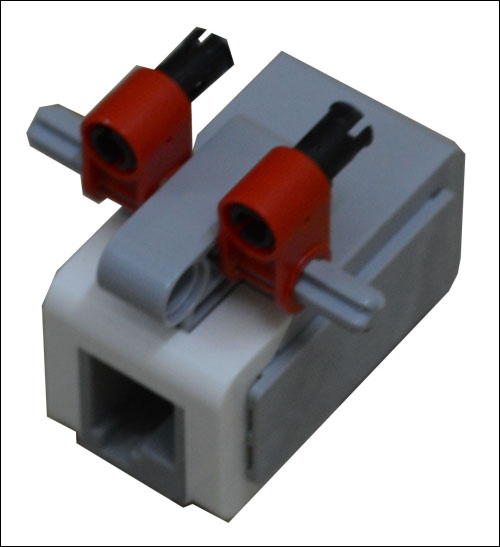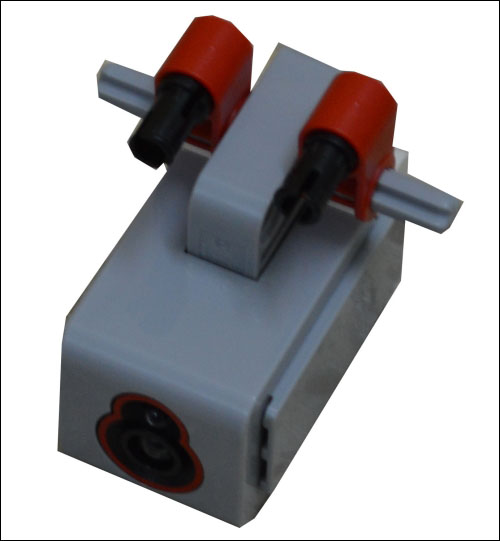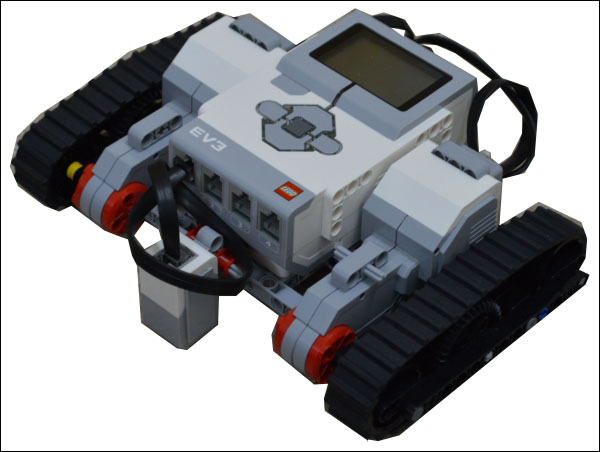Studying the required behavior/specifications indicates that the Line-follower robot has two major components: color detection and locomotion. This informs the construction of the robot. We obviously need a color sensor placed at the front of the robot and pointed towards the bottom/floor to detect the line/path.
The robot's motion consists of moving in a straight line and turning/pivoting in its place at times. The ideal solution for these motion specifications is the differential drive—two large motors placed in parallel and controlled independently. The next section will discuss the differential drive in greater detail.
As in Chapter 3, EV3 Brick Programming, where we created the Obstacle-avoiding robot which also had the differential drive, my recommendation is that you construct and modify the EV3 TRACK3R robot to create the Line-follower robot.
From TRACK3R, we need the two (tank-like) tracks controlled by a Large Motor each. We do not need the decorative wings, the IR Sensor, or any of the Medium Motor attachments that TRACK3R supports. The following screenshot is of TRACK3R with only the drive and none of the attachments:

In place of the IR Sensor, attach the color sensor with its emitter and sensor pointing down towards the floor. A possible construction of the color sensor attachment is given in the the following images:
 |
 |
The black pins slot in to the slotted beam in the front. The following figure shows the completed Line-follower robot:

Note how the front of the color sensor, which contains both the sensor and emitter, is pointing straight down toward the floor so that it can detect the presence (or absence) of the line that the robot is supposed to follow.
